Carving the Unconscious: Chen Haiyan
The newly established Beijing art gallery Ink Studio is delighted to announce its second exhibition, of prints and paintings in ink on paper by artist Chen Haiyan.
Chen Haiyan (b. 1955) is widely recognized as one of the most important Chinese artists carving woodcuts today. She is also an accomplished ink painter and these two media — woodcuts and ink painting — have become inextricably linked in her artistic process. Uniting traditional elite aesthetics with a rough vernacular quality, style and medium work seamlessly together as Chen renders her subject matter, which consists of dream images from her unconscious, with an unparalleled sense of emotional directness,
The experience of growing up in China's industrial northeast and then moving to the south, to Hangzhou, has invested Chen Haiyan's art with a unique combination of earthiness and refinement, of strength and grace. As a child she lived largely unsupervised in her grandparents' farmhouse on the outskirts of the city of Yingkou, surrounded by animals and plants. When she ventured into the city, the art of the 1970s was all propaganda, and art pedagogy focused on drawing from life to create basic solid forms. Moving to Hangzhou to enroll at the Zhejiang Academy of Fine Arts (now the National Academy of Fine Arts), the gentle landscape and elegant literati painting of artists such as Huang Binhong drew her interest. While maintaining her interest in painting, she studied printmaking, a form of art with a very long history in China. Printmaking had not, however, been considered a high art until the 1930s when the communists recognized its value as a medium for spreading ideas, and artists communicating with woodcut artist Käthe Kollwitz were attracted to its facility for communicating strong emotions — something previously lacking in Chinese art.
In the 1980s Chen Haiyan began keeping dream diaries, a habit that continues to this day. At the time, she was obliged to publicly produce politically palatable images of factories and other signs of socialist progress and kept her dream works for a small but highly appreciative audience. Now she bases all her paintings and prints on material drawn from her dream diaries, with subjects ranging from the everyday to the surreal: van Gogh buying a watch at a flea market; the artist dancing with a giant cat; a huge manmade iceberg in West Lake; chasing birds in an old house.
Chen's prints, beginning as they do with an ink painting on wood, underscore the link between brushwork and carving (traditionally the carving of seals), as well as the importance of the compositional balance between figure and ground — Chen often switches in a single work between relief and intaglio. She says, "My works entail transforming rice paper into wood with the help of the Chinese brush. I first use an expansive freehand style of painting on the wooden block and later when I am carving I more carefully actualize the picture that is in my heart and give shape to it." Next to the imagery she writes the dream text drawn from the diary, integrating text and image — a time-honored aspect of traditional Chinese painting.
Chen Haiyan works equally well in small and very large scale. She infuses her boldly colored paintings with expansive verve and her prints, ranging up to 2.5 meters or 8 feet tall, are equally powerful. Eschewing the easy route of the printing press, Chen instead painstakingly hand presses the paper to the carved and inked block, using a burnisher. To produce fine lines the ink must be taken up by the paper gradually, necessitating three or more inkings and burnishings. Printing one sheet may take a day but the result is strikingly clear lines and a glorious even black.
Chen Haiyan applies her mastery of the brushwork and spatial composition required to work on an oversize scale — gained from her experience creating ever-larger woodcuts — to produce monumental paintings. Like many of China's greatest modern calligrapher-seal-carver-painters such as Zhao Zhiqian, Wu Changshi and Qi Baishi, she balances her powerful and carved brushwork with intense, saturated colors. Whereas her carving-painting predecessors applied their da xieyi or "bold, calligraphically-expressive" painting style within traditional painting formats, Chen creates images on a monumental scale better suited to contemporary art.
Chen is currently a senior professor in the Print Department of the National Academy of Fine Arts (formerly the Zhejiang Academy of Fine Arts) in Hangzhou. This is the first time that her monumental ink paintings and her woodcut prints have been exhibited together.
Ink Studio is responding to new and exciting developments in the media of ink painting currently emanating from China. In its upcoming exhibitions program Ink Studio will seek to demonstrate how a group of important artists have, over the past decades, been highly active in researching and developing the immense contemporary creative possibilities of the Chinese painting tradition of paper and ink. These artists' work is increasingly attracting serious international critical attention. Ink Studio's mission is to present the best of this new work to the public in a closely curated exhibition program supported by in-depth critical analysis, scholarly exchange and bi-lingual publishing in Chinese and English.
-
 Chen Haiyan 陈海燕, Manmade Iceberg – West Lake 西湖-人工冰山, 2007
Chen Haiyan 陈海燕, Manmade Iceberg – West Lake 西湖-人工冰山, 2007 -
 Chen Haiyan 陈海燕, The Black Cat and I 黑猫与我, 2004
Chen Haiyan 陈海燕, The Black Cat and I 黑猫与我, 2004 -
 Chen Haiyan 陈海燕, The Moon Leaps from the River 月亮从河水中跳出, 2005
Chen Haiyan 陈海燕, The Moon Leaps from the River 月亮从河水中跳出, 2005 -
 Chen Haiyan 陈海燕, Horse and Rose 马与玫瑰, 2005
Chen Haiyan 陈海燕, Horse and Rose 马与玫瑰, 2005 -
 Chen Haiyan 陈海燕, Moonlight 月亮, 2008
Chen Haiyan 陈海燕, Moonlight 月亮, 2008 -
 Chen Haiyan 陈海燕, A Peach-Corn Tree on a Mudflat 滩涂上的桃子玉米树, 2010
Chen Haiyan 陈海燕, A Peach-Corn Tree on a Mudflat 滩涂上的桃子玉米树, 2010 -
 Chen Haiyan 陈海燕, Craning Neck to Gaze Upwards 伸长脖子向上看, 2009
Chen Haiyan 陈海燕, Craning Neck to Gaze Upwards 伸长脖子向上看, 2009 -
 Chen Haiyan 陈海燕, A Peasant Farmer Band 农民乐队, 2009
Chen Haiyan 陈海燕, A Peasant Farmer Band 农民乐队, 2009 -
 Chen Haiyan 陈海燕, Magnificent 太壮观, 2009
Chen Haiyan 陈海燕, Magnificent 太壮观, 2009 -
 Chen Haiyan 陈海燕, I Won我赢了, 2009
Chen Haiyan 陈海燕, I Won我赢了, 2009 -
 Chen Haiyan 陈海燕, Drowsy 朦胧, 2009
Chen Haiyan 陈海燕, Drowsy 朦胧, 2009 -
 Chen Haiyan 陈海燕, This Bird, This Rooster 这鸟这鸡, 2009
Chen Haiyan 陈海燕, This Bird, This Rooster 这鸟这鸡, 2009 -
 Chen Haiyan 陈海燕, Van Gogh Selling Locks 凡高卖锁, 1986
Chen Haiyan 陈海燕, Van Gogh Selling Locks 凡高卖锁, 1986 -
 Chen Haiyan 陈海燕, Me and My Little Brother 我与弟弟, 1986
Chen Haiyan 陈海燕, Me and My Little Brother 我与弟弟, 1986 -
 Chen Haiyan 陈海燕, Mental Illness 精神病, 1986
Chen Haiyan 陈海燕, Mental Illness 精神病, 1986 -
 Chen Haiyan 陈海燕, Dust Fills the Air 灰尘飞满天, 1986
Chen Haiyan 陈海燕, Dust Fills the Air 灰尘飞满天, 1986 -
 Chen Haiyan 陈海燕, A Skinned Sheep 剥皮羊, 1986
Chen Haiyan 陈海燕, A Skinned Sheep 剥皮羊, 1986 -
 Chen Haiyan 陈海燕, Meeting Their Mates 相亲, 1986
Chen Haiyan 陈海燕, Meeting Their Mates 相亲, 1986 -
 Chen Haiyan 陈海燕, Ducks 鸭子, 1986
Chen Haiyan 陈海燕, Ducks 鸭子, 1986 -
 Chen Haiyan 陈海燕, The Kitten is Sick 小猫病了, 1986
Chen Haiyan 陈海燕, The Kitten is Sick 小猫病了, 1986 -
 Chen Haiyan 陈海燕, Police Officer 警察, 1986
Chen Haiyan 陈海燕, Police Officer 警察, 1986 -
 Chen Haiyan 陈海燕, The Motorcycle Drives Away 摩托开走了, 1986
Chen Haiyan 陈海燕, The Motorcycle Drives Away 摩托开走了, 1986 -
 Chen Haiyan 陈海燕, Four Cats 四只猫, 1986
Chen Haiyan 陈海燕, Four Cats 四只猫, 1986 -
 Chen Haiyan 陈海燕, Ghost 鬼, 1986
Chen Haiyan 陈海燕, Ghost 鬼, 1986 -
 Chen Haiyan 陈海燕, A Cézanne Catalogue 塞尚画册, 1986
Chen Haiyan 陈海燕, A Cézanne Catalogue 塞尚画册, 1986 -
 Chen Haiyan 陈海燕, Golden Lion 金色狮, 1986
Chen Haiyan 陈海燕, Golden Lion 金色狮, 1986 -
 Chen Haiyan 陈海燕, A String of Prayer Beads 一串佛珠, 1986
Chen Haiyan 陈海燕, A String of Prayer Beads 一串佛珠, 1986 -
 Chen Haiyan 陈海燕, Chickens Turning Into Little Cars 鸡变小汽车, 1986
Chen Haiyan 陈海燕, Chickens Turning Into Little Cars 鸡变小汽车, 1986 -
 Chen Haiyan 陈海燕, The Egg is Truly Great 鸡蛋真伟大, 1986
Chen Haiyan 陈海燕, The Egg is Truly Great 鸡蛋真伟大, 1986 -
 Chen Haiyan 陈海燕, Dragonfly 蜻蜓, 1986
Chen Haiyan 陈海燕, Dragonfly 蜻蜓, 1986 -
 Chen Haiyan 陈海燕, None of the Melons Are Ripe 瓜都不熟, 1986
Chen Haiyan 陈海燕, None of the Melons Are Ripe 瓜都不熟, 1986 -
 Chen Haiyan 陈海燕, Five Goldfish 五条金鱼, 1986
Chen Haiyan 陈海燕, Five Goldfish 五条金鱼, 1986 -
 Chen Haiyan 陈海燕, Song of the Divine 神的歌, 1986
Chen Haiyan 陈海燕, Song of the Divine 神的歌, 1986 -
![Chen Haiyan 陈海燕, A Rat Tells Me [Your Cat is My Friend] 老鼠说, 1986](data:image/gif;base64,R0lGODlhAQABAIAAAAAAAP///yH5BAEAAAAALAAAAAABAAEAAAIBRAA7) Chen Haiyan 陈海燕, A Rat Tells Me [Your Cat is My Friend] 老鼠说, 1986
Chen Haiyan 陈海燕, A Rat Tells Me [Your Cat is My Friend] 老鼠说, 1986 -
 Chen Haiyan 陈海燕, A Group of Children 一群小孩, 1986
Chen Haiyan 陈海燕, A Group of Children 一群小孩, 1986 -
![Chen Haiyan 陈海燕, I Let Go [of the Snake] 我松开手, 1986](data:image/gif;base64,R0lGODlhAQABAIAAAAAAAP///yH5BAEAAAAALAAAAAABAAEAAAIBRAA7) Chen Haiyan 陈海燕, I Let Go [of the Snake] 我松开手, 1986
Chen Haiyan 陈海燕, I Let Go [of the Snake] 我松开手, 1986 -
 Chen Haiyan 陈海燕, Cat Out All Night 夜猫, 2013
Chen Haiyan 陈海燕, Cat Out All Night 夜猫, 2013 -
 Chen Haiyan 陈海燕, Nude Women 裸女, 2013
Chen Haiyan 陈海燕, Nude Women 裸女, 2013










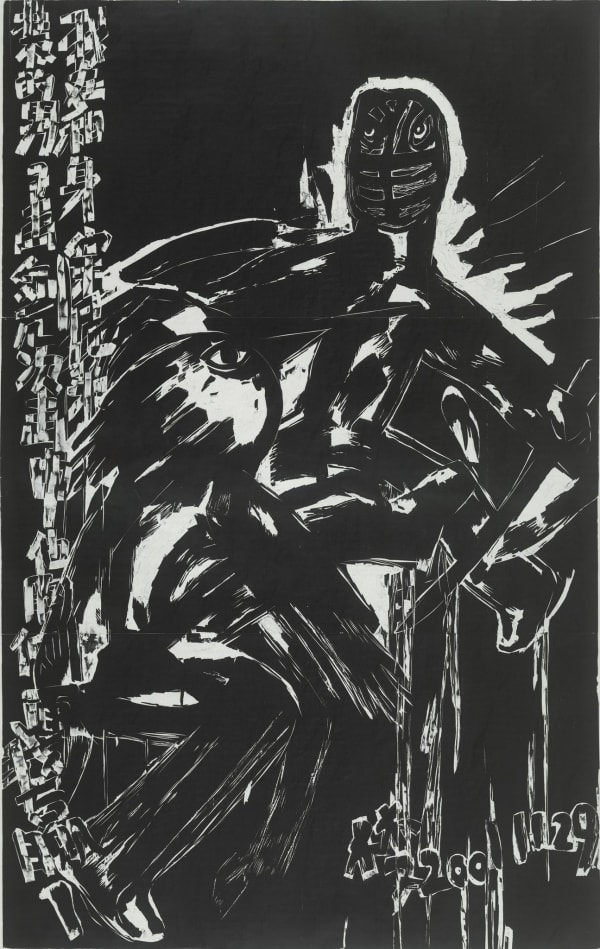
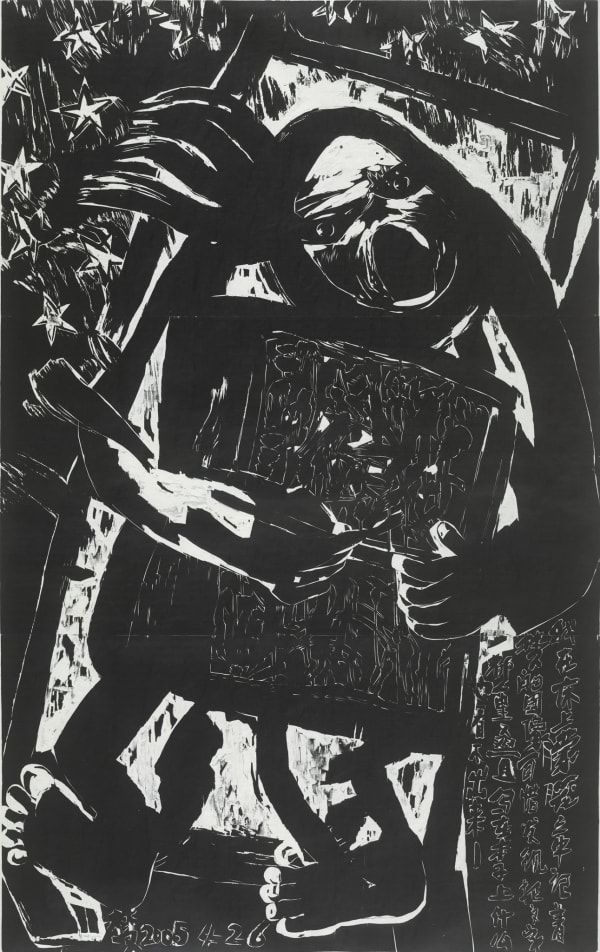



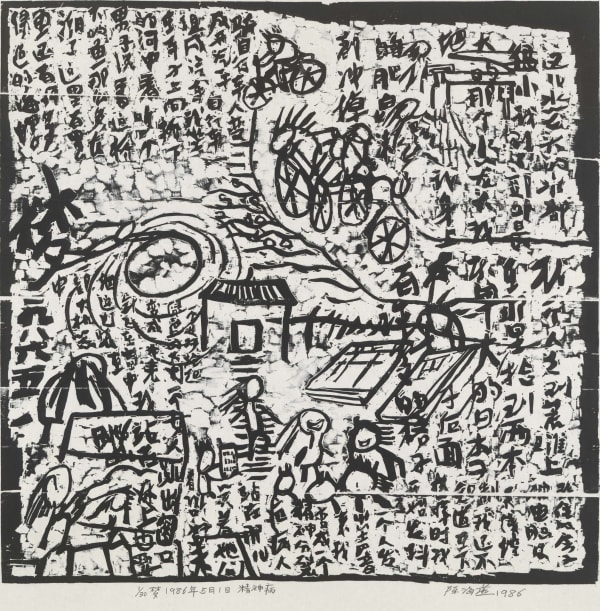

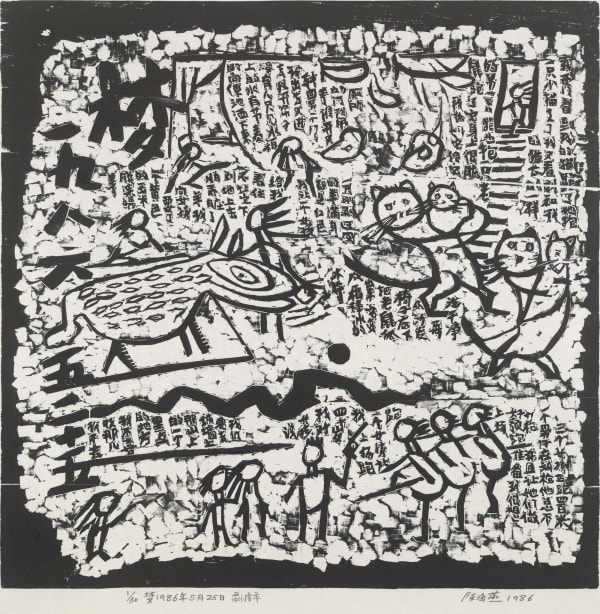


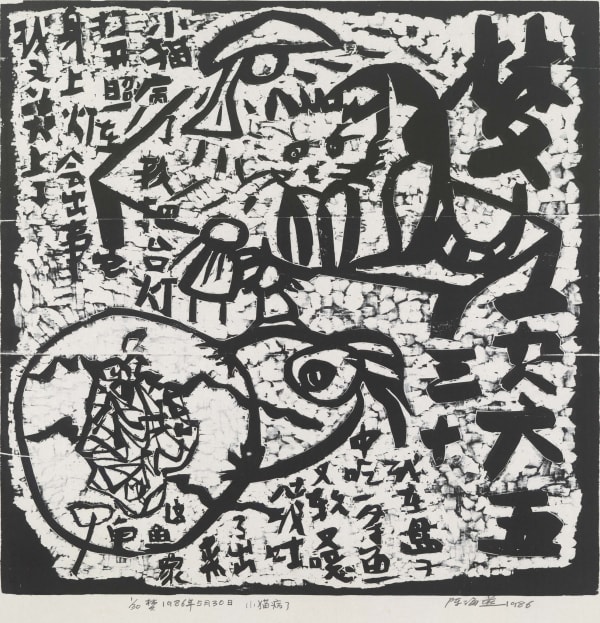


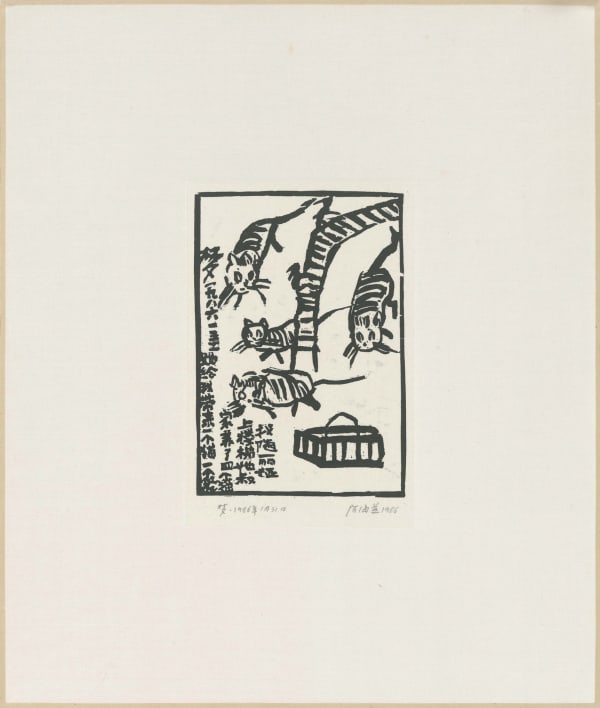
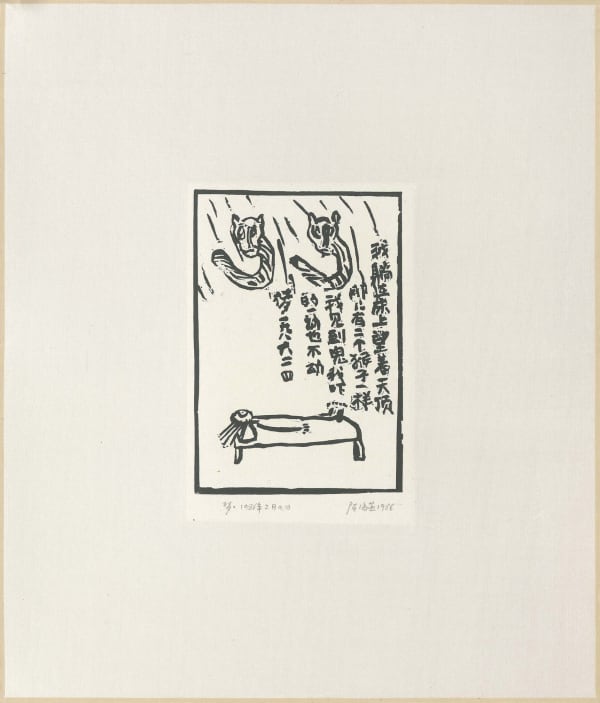









![Chen Haiyan 陈海燕, A Rat Tells Me [Your Cat is My Friend] 老鼠说, 1986](https://artlogic-res.cloudinary.com/w_600,c_limit,f_auto,fl_lossy,q_auto/artlogicstorage/inkstudio/images/view/3883c98cfede892ef3b1f7c4cf39cc9c7ae5d7ea.jpg)
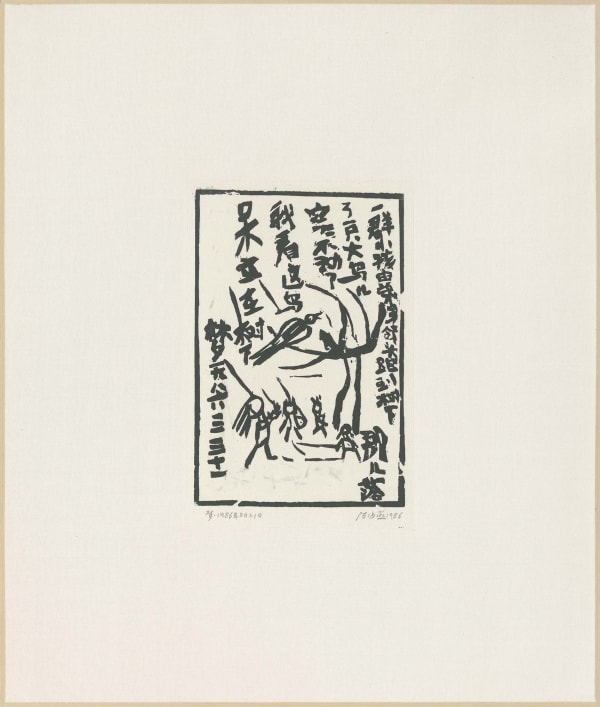
![Chen Haiyan 陈海燕, I Let Go [of the Snake] 我松开手, 1986](https://artlogic-res.cloudinary.com/w_600,c_limit,f_auto,fl_lossy,q_auto/artlogicstorage/inkstudio/images/view/a0e67cd05fd998b795a01ba70fea652a762caddb.jpg)





